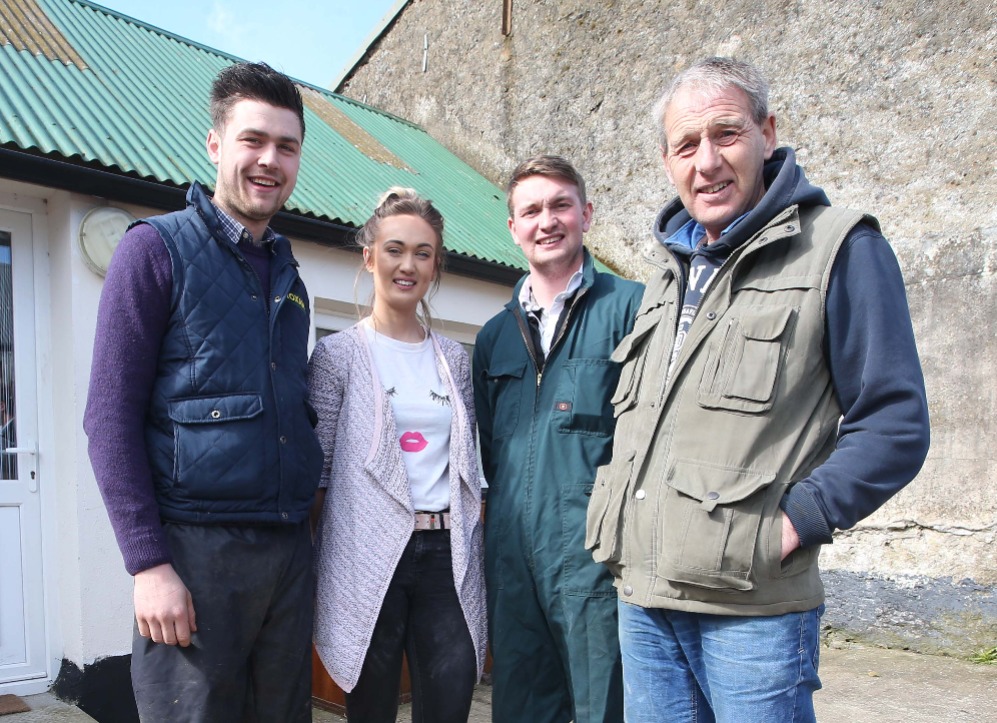Tags
Applying Kiwi lessons in Killeter
KILLETER, Co Tyrone dairy farmer James Hemphill returned home last May from a six-month working holiday in New Zealand with renewed confidence in the future of grass-based milk production.
“Not every idea that works in NZ suits Northern Ireland, but the way in which Kiwis utilize grass to produce milk at a decent margin has some lessons for us here,” explained James.
“I worked on a 700 cow unit on North Island about 15mins outside Hamilton, the fourth largest city in New Zealand. The business was based on growing grass to produce milk at a profit and give the family a sensible work-life balance.
“On North Island, the easier winters cut costs of housing and feeding, but the NZ attitude to keeping management simple also helps. New Zealanders seem to keep cows for a living rather than live to keep cows. For example, 700 cows were milked in two hours through a 44 point rotary parlour by two of us.”
Delighted to be settled back home farming with his father Stephen, who is thinking of semi-retirement, James has plans to upgrade grassland management for their 100 cow herd. If an application to the Farm Business Investment Scheme goes forward then the development of a paddock system and other grassland enhancement works will be speeded up and the business gradually expanded.
Stephen and James supply milk to Aurivo Co-Op with a typical analysis of butterfat 4.16%, protein 3.3%, cell count 250 and a TBC of 12.
Unlike many, they use their dairy herd as the basis for a second income stream outside of the volatile milk market.
All cows are now being put in calf to Aberdeen Angus sires to produce stock ideal for finishing as beef bullocks and heifers. Thus avoiding minimal value Holstein bull calves and being able to buy in replacement heifers as easily as rear them.
“This meant that when milk prices stalled we were still having actual profit come in from beef cattle out of pedigree Angus bulls,” noted James.
“The consumer pays a premium for AA beef with unique taste sold in top-end retailers and restaurants right across the UK from Enniskillen to Essex. Thus generating a healthy bonus for producers.
“And of course the Aberdeen Angus cross is easy to calf and easy on our cows at calving. This traditional breed crossed with Holstein gives cattle that are a pleasure to work with, finish economically at good weights and grades by 27 to 30 months and make great use of grass.”
The Hemphill father and son partnership this past 18 months have also been early adopters of the latest in livestock identification. The Roxan of Selkirk cattle tags and applicators made with a sensible Scottish approach to value for money.
James commenting that “We find the extra long handles of the applicators gives great leverage and being metal they last longer.
“But above all the ear tags are very robust and any few replacements needed for Roxan tags are supplied free. We also find the service second to none from Northern Ireland representative Kieran Travers and their local tag production facility in Ballycastle. Tags ordered in the forenoon are generally in our yard the following day”

According to James another huge advantage of using Roxan tags is in speedy results from BVD sampling – usually two or three days instead of a week.
“These tags are designed to allow tagging, tissue collection and sample sealing in a single step process unrivalled for ease of use. A system giving a 99.7% success rate!
“My working break in NZ re-enforced lessons learned with my father and on the CAFRE level 3 agricultural diploma course. Keep it simple and practical with an eye on the bottom line with the right work-life balance.
“So switching to Roxan value for money, made to last ear tags was another step in simplifying the business of farming.”
Reported by
Rodney Magowan


